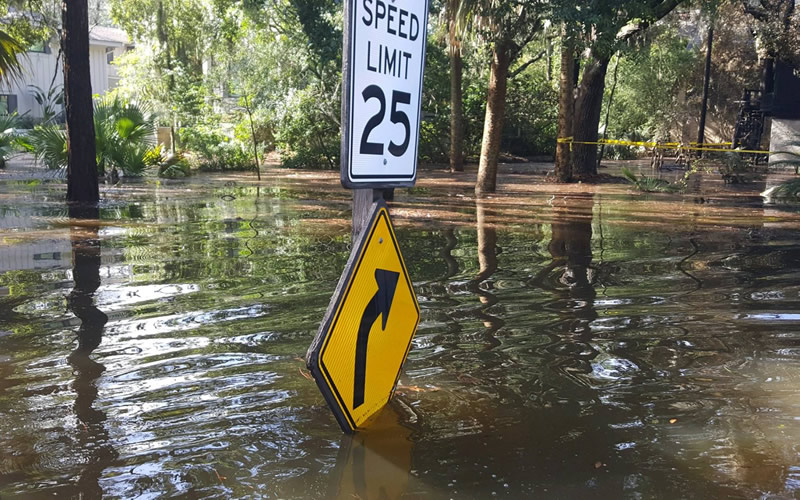Editor’s Note: With today’s issue, we introduce a new contributing columnist, Fred Palm of Edisto Island. Every month, he’ll focus on issues related to the common good. This week, we’re running a commentary he wrote for our sister publication, Statehouse Report, a couple of weeks ago.
By Fred Palm, special to Charleston Currents | A major transition just began in public finance now that two bond rating agencies, Moody’s and Standard and Poor’s, the say they will add the risk of flooding to flood risk to financial risk when they evaluate the total risk. The addition is expected to have a major impact on associated bond interest rates that state and local governments will pay to borrow up front for their major building programs.
Why the change? The rating agencies are concerned lenders can lose all their investments should flooding impacts become extreme. To date, only financial risk was measured. This new metric can be expected to impact the state and local public finance decisions of lenders and borrowers.
Flood plan risk
When capital investment decision-makers start assessing longer-term risk, the risk inherent in the overall flood adaption plans themselves becomes a consideration of how effective a flood plan will be in addressing the potential flooding conditions — not just the risk of failing to make the coupon payment associated with a project or general obligation bond.
When there is a flood, there is the possibility of financial collapse if a locality cannot create a new repayment schedule because there are too few taxpayers to make even the adjusted payment schedule. The most valuable residential tax-paying properties generally are close to water and also subject to higher probabilities of flood risk. While coastal communities may look good on paper financially, they have more future taxes at risk. Because conditions can change rapidly as Puerto Rico found out this year, lenders will likely be more cautious and give the plans a thorough review, probably through specialized external consultants. Expect to add time and cost to these decisions.
Moody’s and all the capital lenders will have to calculate the risk of long-term total catastrophic loss, not just the request they are being asked to finance and the tax stream that might be tapped by the lenders to generate the payments in the case of a payment default.
For the raters, lenders and taxpayers, these are uncharted waters. A financing decision may become an all-or-none decision reflecting the economic viability of a locality and the validity of its adaption plan taken together. The expansion of the consideration gives rise to the question of defensive protection of assets and people at risk in the flood plan.
Scoring the flood plans
The actual flood plans of a local or state government will be assessed in terms of the flood height assumption and the ability of the underlying plan to deliver the protection at the assumed height. These plans have to be valid for the inherent climate assumptions being made. Those areas without robust containment and recovery characteristics will likely pay a higher interest rate or be unable to secure the needed funding. The bond raters will be interested in flood risk in the prevention or defense characteristics, and the damage reduction aspects of drainage. How all of this gets addressed financially, once there is actually a plan developed, is new territory in public finance.
Pressures on the general fund
These new wrinkles will likely emerge for local governments as a consequence of the final determinations that could squeeze them to adopt more of the pay-as-you-go strategy using their annually-approved general fund revenues. If so, this will squeeze the already-stressed operating budget that pays for salaries, pensions and day-to-day expenses.
For local governments in the future, flood planning will need to move past a collection of FEMA floodplain maps and gear up with inundation maps, identification of current vulnerabilities and strategic plans to defend what we have developed. This means there will need to be more strategic thinking in terms of adopting engineered solutions and natural barriers to direct and contain more water.
Fred Palm of Edisto Island is a retired professor of oversight and investigations at the John Jay College School of Public Management and a former executive director of the Association of Inspectors General.
- Have a comment? Send to: editor@charlestoncurrents.com





 We Can Do Better, South Carolina!
We Can Do Better, South Carolina!
























